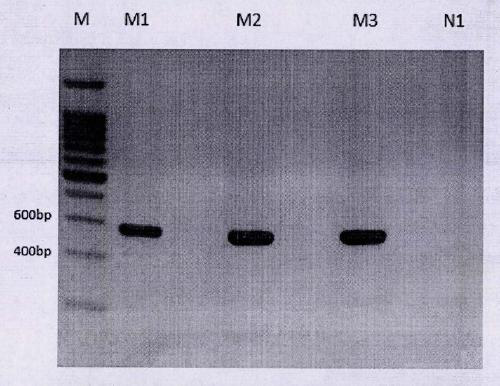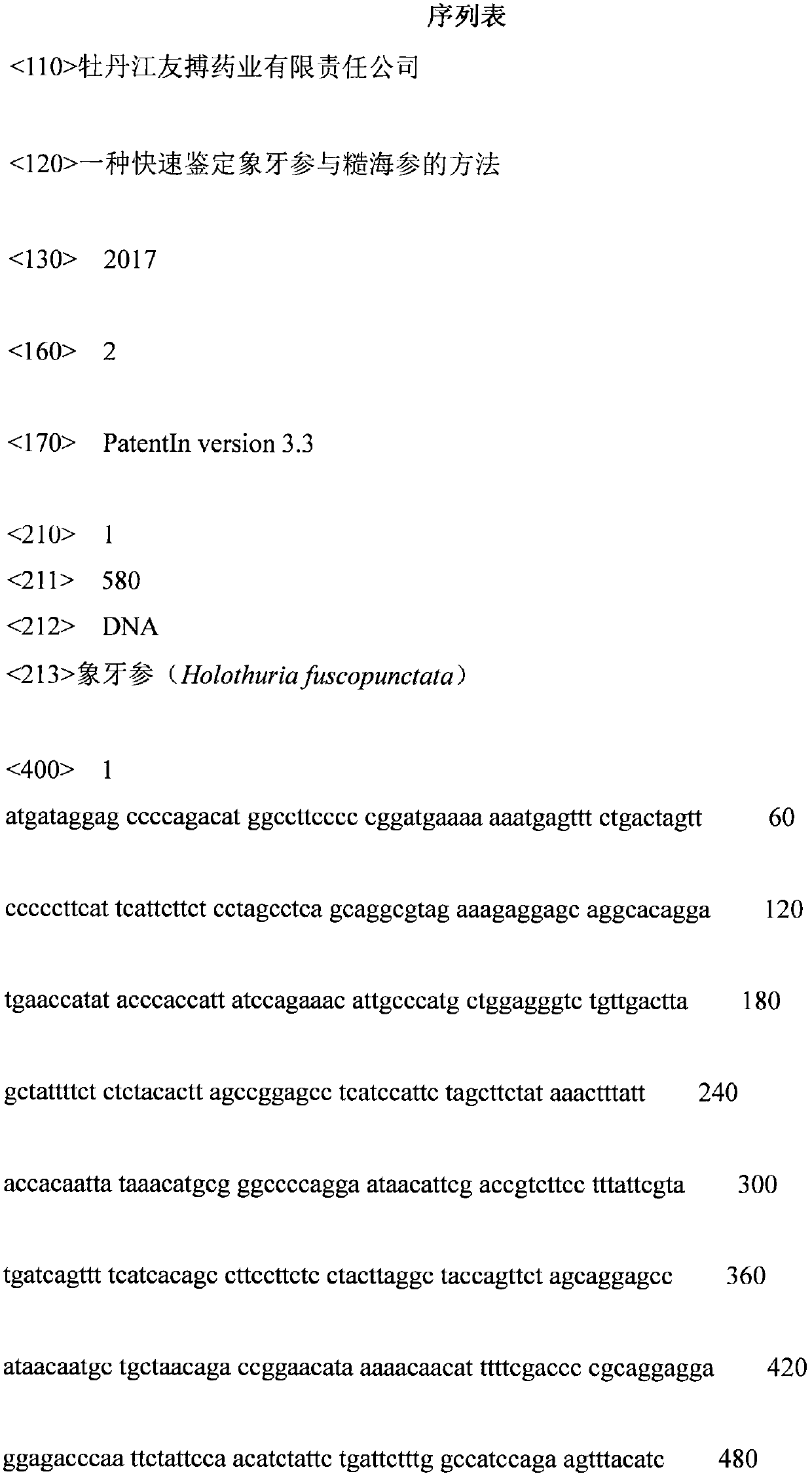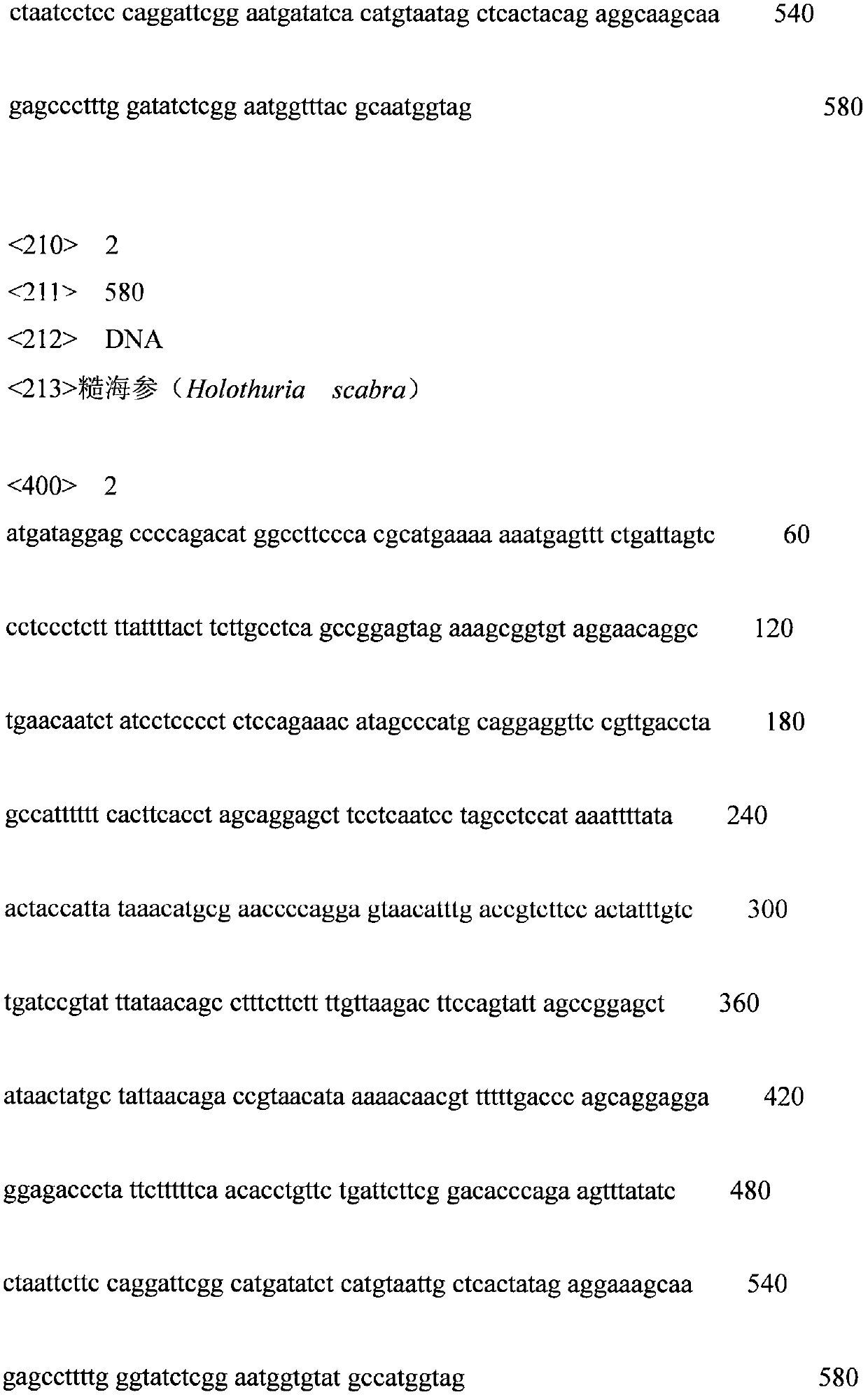A method for rapid identification of ivory-participating sea cucumbers
A rough sea cucumber and ivory technology, applied in the field of species identification, can solve the problems of feature disappearance, difficulty in identifying sea cucumber species, and morphological destruction
- Summary
- Abstract
- Description
- Claims
- Application Information
AI Technical Summary
Problems solved by technology
Method used
Image
Examples
Embodiment 1
[0027] 1. Collection of sea cucumber specimens: M1-dried ivory sea cucumber; M2-dried rough sea cucumber; M3-collected sea cucumber samples from random markets
[0028] 2. Pretreatment of test samples: first step, first replace the alcohol in the sea cucumber alcohol-preserved samples and soak the dried sea cucumber samples. The solutions used are PBS (137mmol / L NaCl, 2.7mmol / L KCl, 10mmol / L Na2HPO4 , 2mmol / LKH2PO4, pH 7.2) In the second step, take 50-80mg of the sample processed in the previous step and put it in 800-1000μl high-salt buffer (200mmol / L Tris-HCl, 50mmol / L EDTA, 500mmol / L NaCl, 0.2 % β-mercaptoethanol, pH 8.0), centrifuge at 10000-12000g / min for 1-2min, discard the supernatant; repeat the operation twice. Proteinase K was incubated at 65°C for 1 hour until the tissue was completely dissolved. Add an equal volume of chloroform:isoamyl alcohol (24:1) and mix well, centrifuge at 15,000×g for 10 minutes at room temperature, and carefully pipette the supernatant int...
PUM
 Login to View More
Login to View More Abstract
Description
Claims
Application Information
 Login to View More
Login to View More - R&D
- Intellectual Property
- Life Sciences
- Materials
- Tech Scout
- Unparalleled Data Quality
- Higher Quality Content
- 60% Fewer Hallucinations
Browse by: Latest US Patents, China's latest patents, Technical Efficacy Thesaurus, Application Domain, Technology Topic, Popular Technical Reports.
© 2025 PatSnap. All rights reserved.Legal|Privacy policy|Modern Slavery Act Transparency Statement|Sitemap|About US| Contact US: help@patsnap.com



